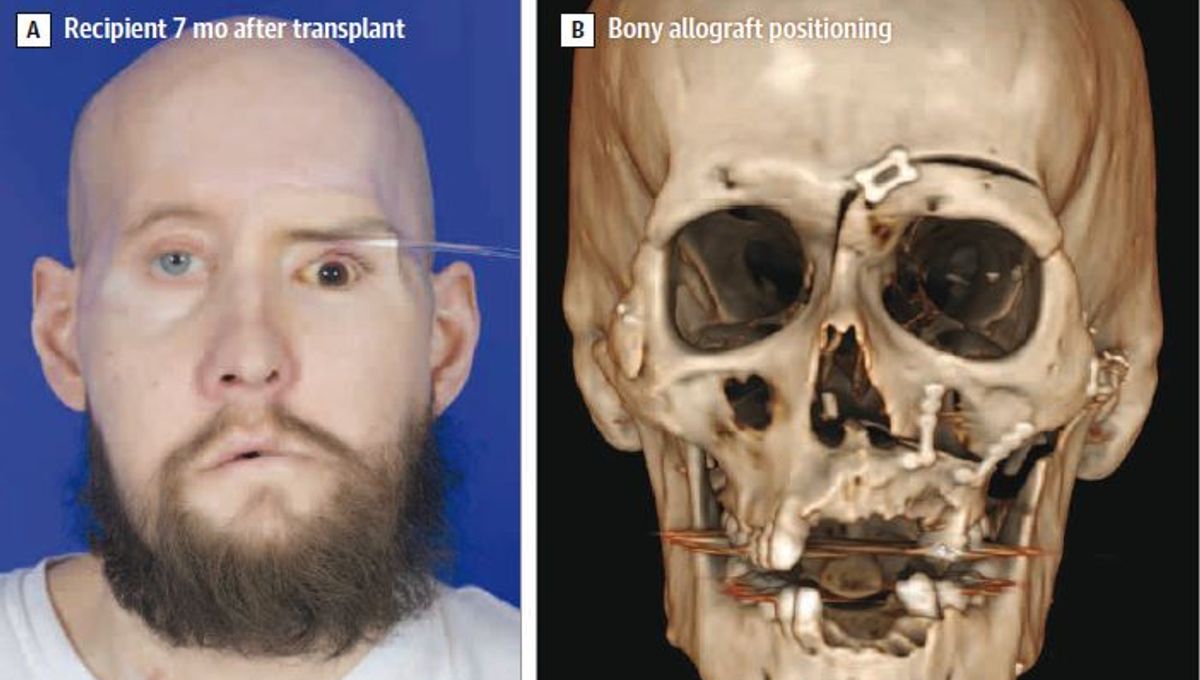
The doctors who performed the world’s first total eye and partial face transplant have reported on their patient’s progress one year on, and the results are promising. The patient, 46-year-old military veteran Aaron James from Arkansas, has recovered well without immune rejection – and though he is still unable to see through the transplanted eye, the retina is responding to light, a huge step forward.
James sustained a high-voltage electric shock while working as a lineman in June 2021, which caused him to lose his left eye and eyelid, nose, lips, and a large portion of his facial tissue. Conventional reconstruction was performed, including skin grafts and removal of the eyeball, which was too severely damaged to be saved and was causing pain.
Although James recovered, as time went by, he continued to experience significant difficulties due to the scarring and damage to his nasal passages. That’s when he turned to the vascularized composite allotransplantation (VCA) team at New York University Langone Health.
VCA is advanced facial reconstruction that seeks to restore the anatomy and function of facial tissues in a way that hasn’t previously been achievable, the ultimate goal being total facial transplantation.
The surgical team felt that James’ case could be a good fit for an eye transplant as well as a partial face transplant, but they also made it clear to him that this was an experimental procedure. It was understood that James would likely never regain any vision in the eye, and there was a risk of damaging the working right eye as well as the usual hazards of undergoing a transplant, such as the need for lifelong immunosuppression.
Ultimately, after considering all the factors carefully, James decided to go ahead with the procedure. The surgery was carried out in May 2023 after a suitable donor was identified.
At a progress report five months later, transplant surgeon Bruce E. Gelb said in a statement, “The progress we’ve seen with the eye is exceptional, especially considering that we have a viable cornea paired with a retina showing great blood flow five months after the procedure.”
One of the key concerns had been whether the blood supply could be successfully restored to the transplanted eye, so the fact that this milestone was reached was a positive step. However, at that time it was still unclear whether the nerve connections to the eye would be salvageable in any way, and whether the retina would be able to function.
Now, over one year on, the team has been able to do more in-depth testing. The first bit of good news is that the transplanted tissue has continued to survive, and James has not experienced immune rejection. Aesthetically, the results of the transplant are much improved on the initial reconstruction, and James reported that his quality of life had increased.
As to the function of the eye, the authors report that James still has no vision on that side, which is not unexpected. However, they write that the “ophthalmic evaluations showed several potentially positive findings” – the pressure in the eye is within normal range, the blood supply continues to be good, and some of the structure of the retina has been retained.
Excitingly, although James is unable to perceive any light through the eye, the retina itself has been shown to have some response to light.
“Many experts did not think we would even be here, but we’ve successfully transplanted and maintained an eye without immune rejection,” said corresponding author Dr Eduardo D. Rodriguez in a statement.
And though vision restoration is not achievable quite yet, it remains a goal for the future.
“Now, the next challenge is understanding how to restore sight. I look forward to continuing this research in collaboration across academia to accelerate these discoveries with unique tools and the best therapies,” Rodriguez added.
The study is published in the Journal of the American Medical Association (warning: graphic images).
Source Link: World's First Eye And Face Transplant: One Year Later, Eye Now Responds To Light